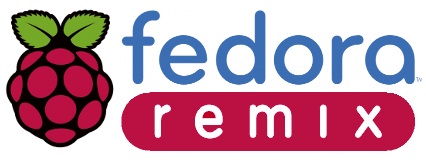Difference between revisions of "Raspberry Pi Fedora Remix Installation"
Chris Tyler (talk | contribs) (Created page with '{{Raspberry Pi Fedora Remix}} == SD Card Installation Using the Installer == The easiest way to install the Remix is to use the installer progra…') |
(No difference)
|
Revision as of 11:19, 28 February 2012

SD Card Installation Using the Installer
The easiest way to install the Remix is to use the installer program.
Needed:
- A computer with at least 5 GB of free disk space, running one of these operating systems:
- Fedora
- Windows Vista or Windows 7
- Other Linux
- An SD or SDHC card, with a capacity of 2GB or more. (Good-quality class 4 cards usually work well). Do not use a MicroSD card with an adapter -- it will not be recognized by the Raspberry Pi.
- An SD/SDHC card writer, either built in to the computer or connected to a USB port.
- An Internet connection.
Steps:
- Download the installer from the appropriate link:
- Fedora (link to be provided)
- Windows (link to be provided)
- Other Linux (link to be provided)
- Run the installer.
- Click the refresh (circle-arrow) button to retrieve a list of available images and mirror locations.
- Select the image you wish to install ("Raspberry Pi Fedora Remix 14") -- or, if you have already downloaded the image file, browse to that file's location.
- Select the device on which you wish to install the image (WARNING: all data on this device will be deleted! - be sure you have selected the correct device).
- Click "Install".
- Wait until the program states that the installation is complete before removing the card.
SD Card Installation Using the dd Command
The image can also be installed using the Unix/Linux dd command.
Needed:
- A computer with at least 5 GB of free disk space, running some form of Unix or Linux.
- An SD or SDHC card, with a capacity of 2GB or more. (Good-quality class 4 cards usually work well). Do not use a MicroSD card with an adapter -- it will not be recognized by the Raspberry Pi.
- An SD/SDHC card writer, either built in to the computer or connected to a USB port.
- An Internet connection.
Steps:
- Download the image (link to be provided)
- Insert your SD/SDHC card into the card reader, and attach to the computer if necessary.
- Identify the device node of the SD card (this will be something like
/dev/sdcor/dev/mmcblk0).- Do not use a partition device node (for example: use
/dev/sdcor/dev/mmcblk0, not/dev/sdc1or/dev/mmcblk0p1). - An easy way to identify the card is to list the device nodes (
ls -l /dev/sd* /dev/mmcblk*) before and after inserting the SD card. Device nodes that that appear when the card is inserted correspond to the card.
- Do not use a partition device node (for example: use
- Ensure that the device is unmounted.
- Copy the image file to the card:
dd if=/dev/NameOfImageFile of=/dev/DeviceNode - Ensure that the image is fully written onto the card:
sync - Remove the card.